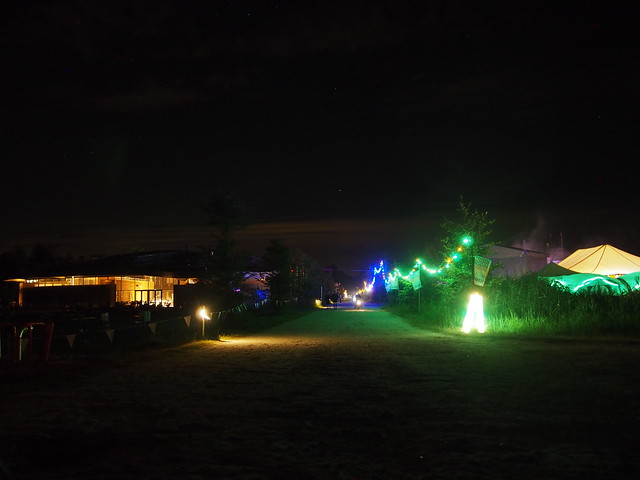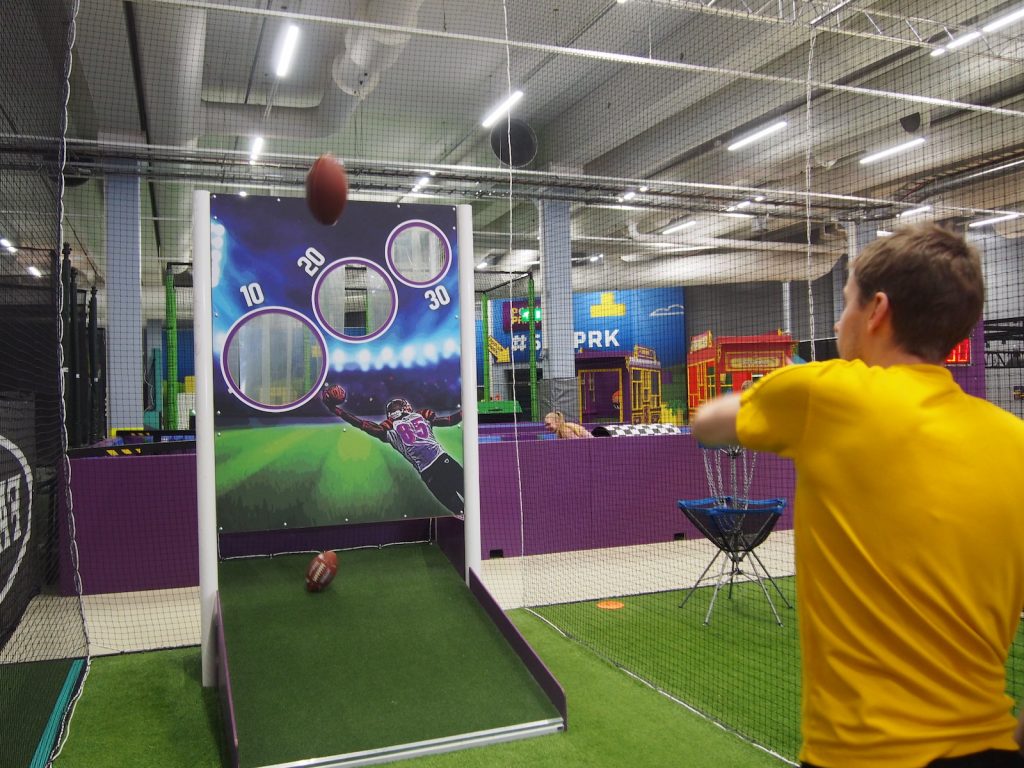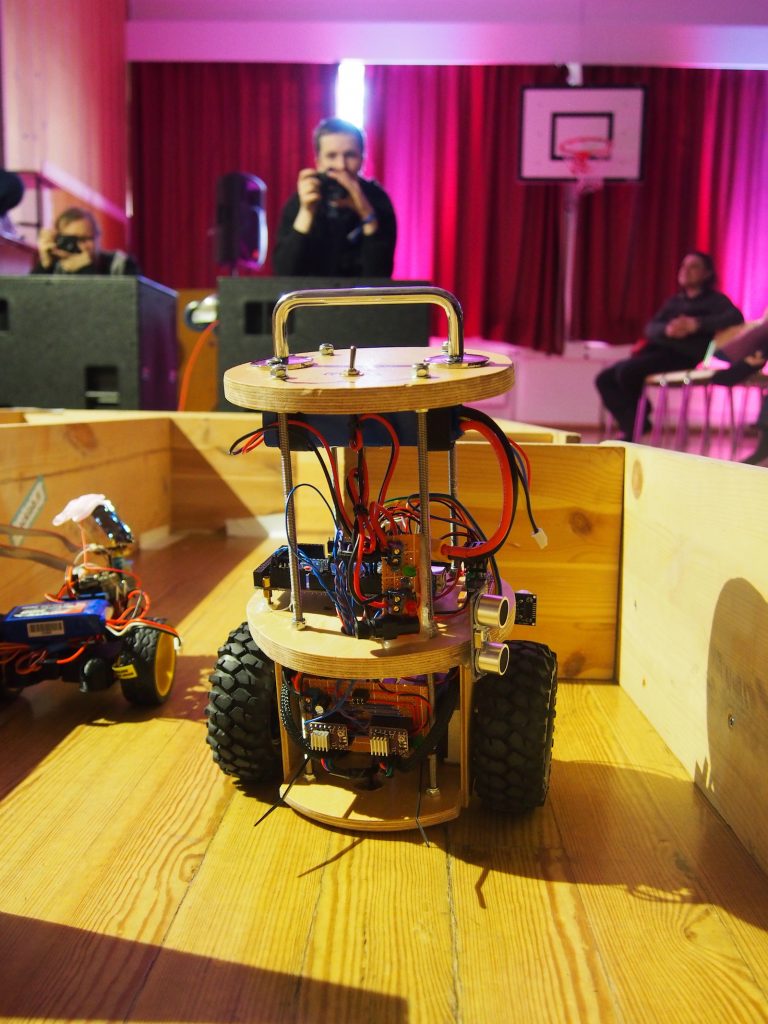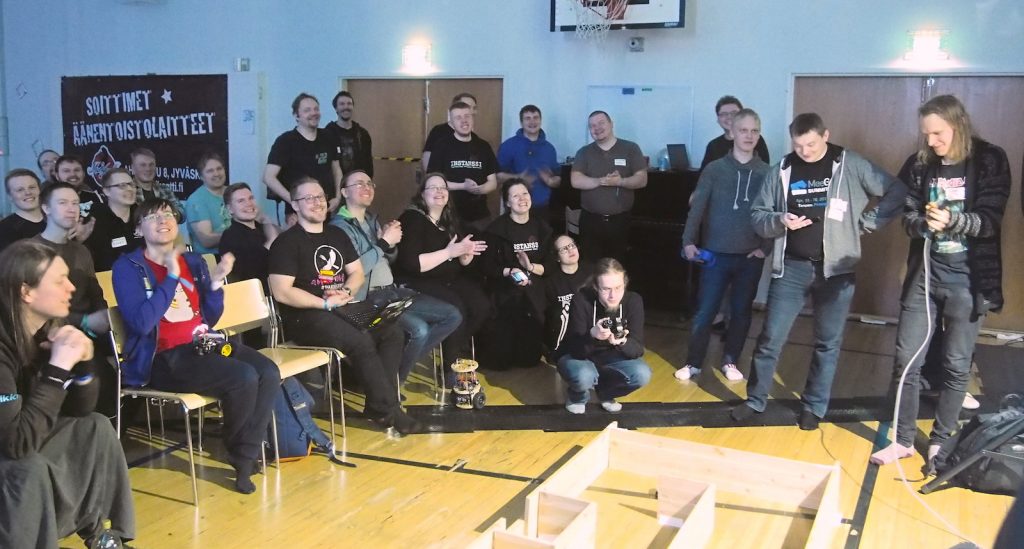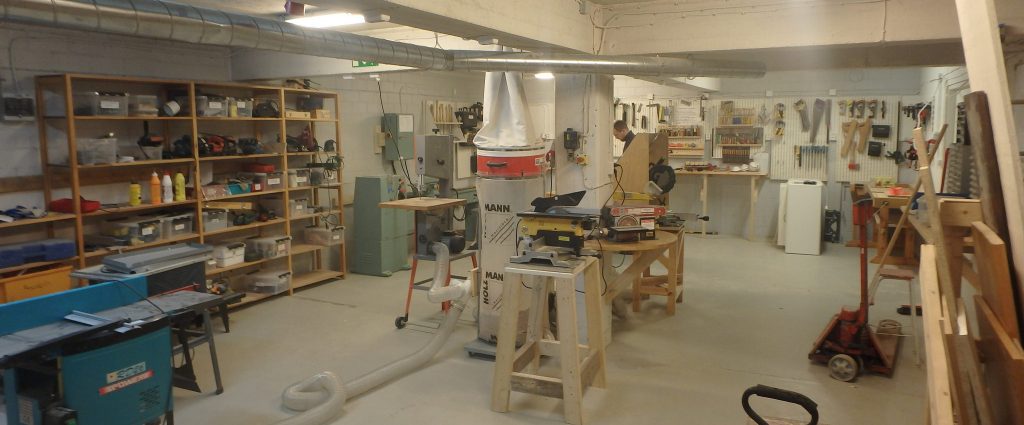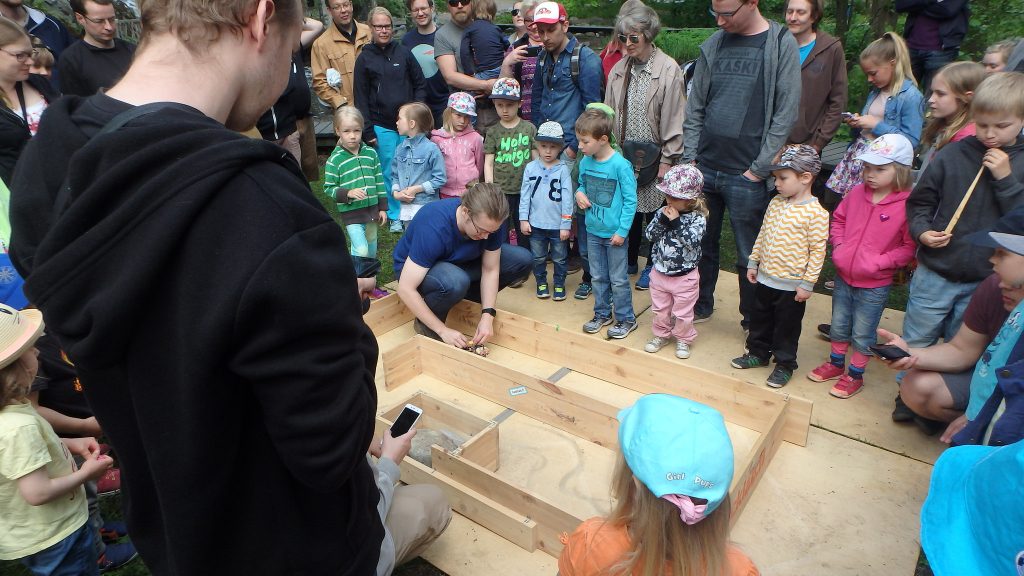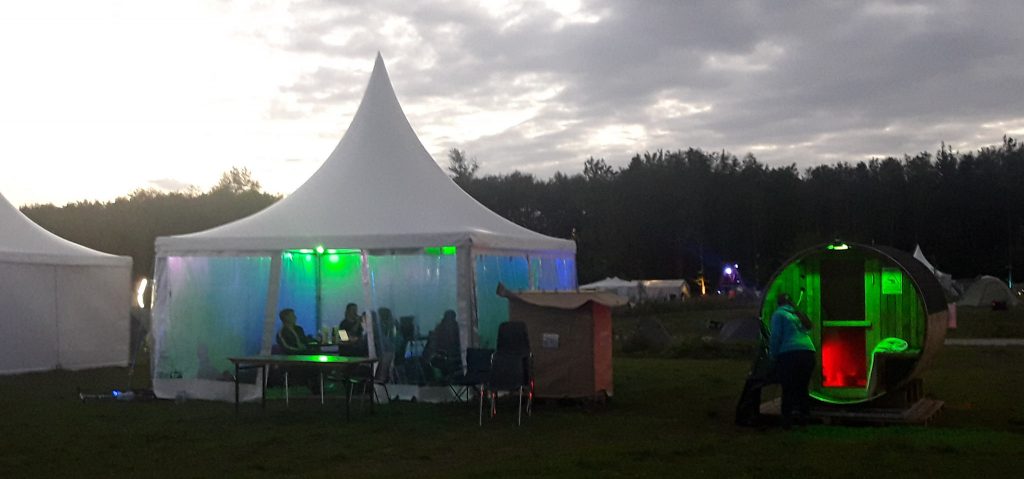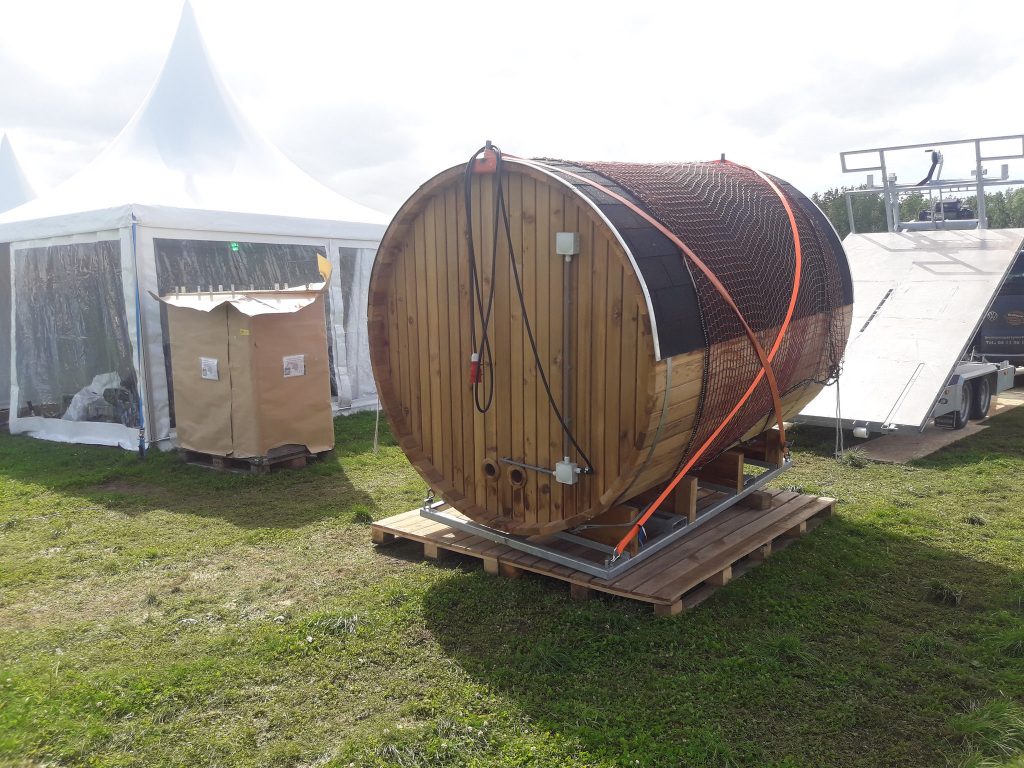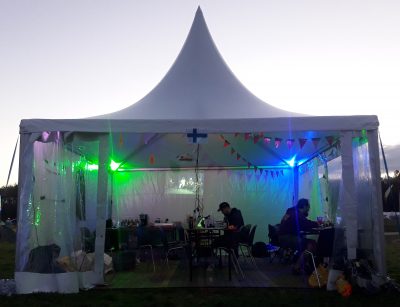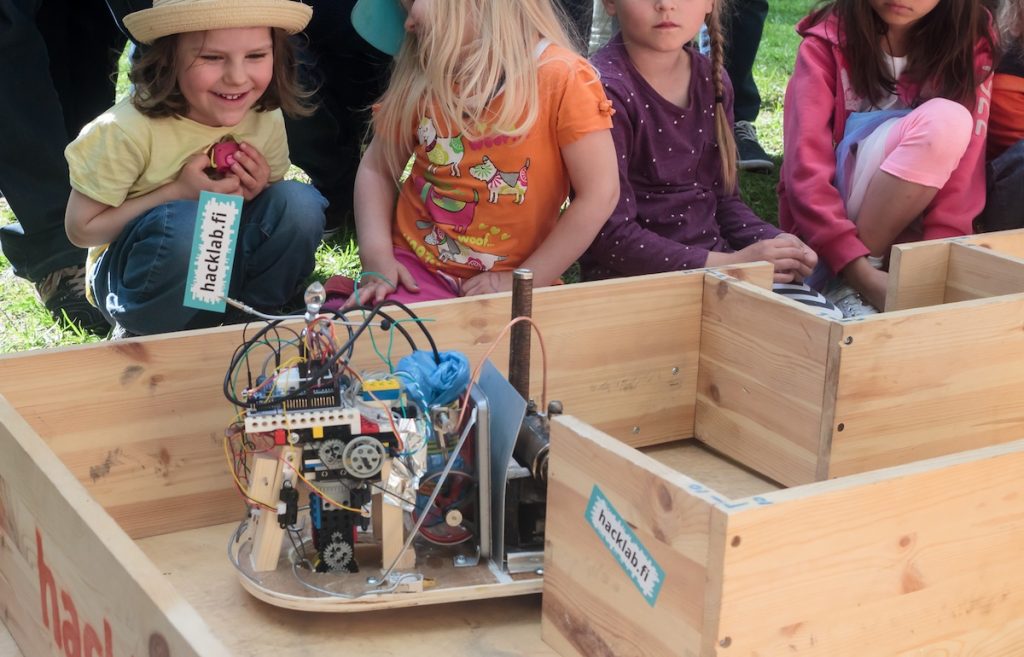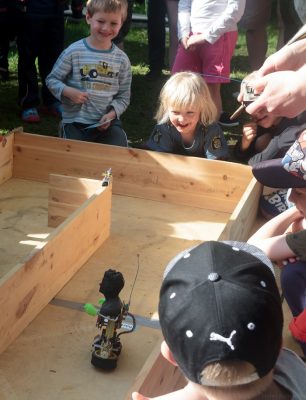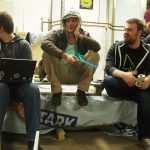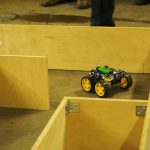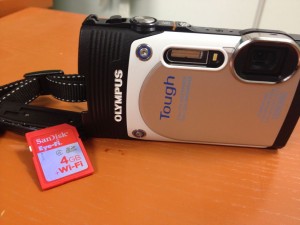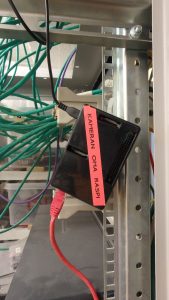SATS Rocket Club launches Arduinos on rockets
Guest content provided by our friends at SATS-SAFF ry.
Blast from 2023 (apologies from blog editor for publishing this guest feature late!)
The SATS Rocket Boys go Vaasa, again!
Our team of five rocket enthusiasts (2 x Matti, Timo, Vesa and me, Mika) participated again in organising the Finnish CanSat event from 30 March to 2 April 2023. CanSat is a competition run by ESERO, the European Space Education Resource Office, coordinated in Finland by Heureka Science Centre.
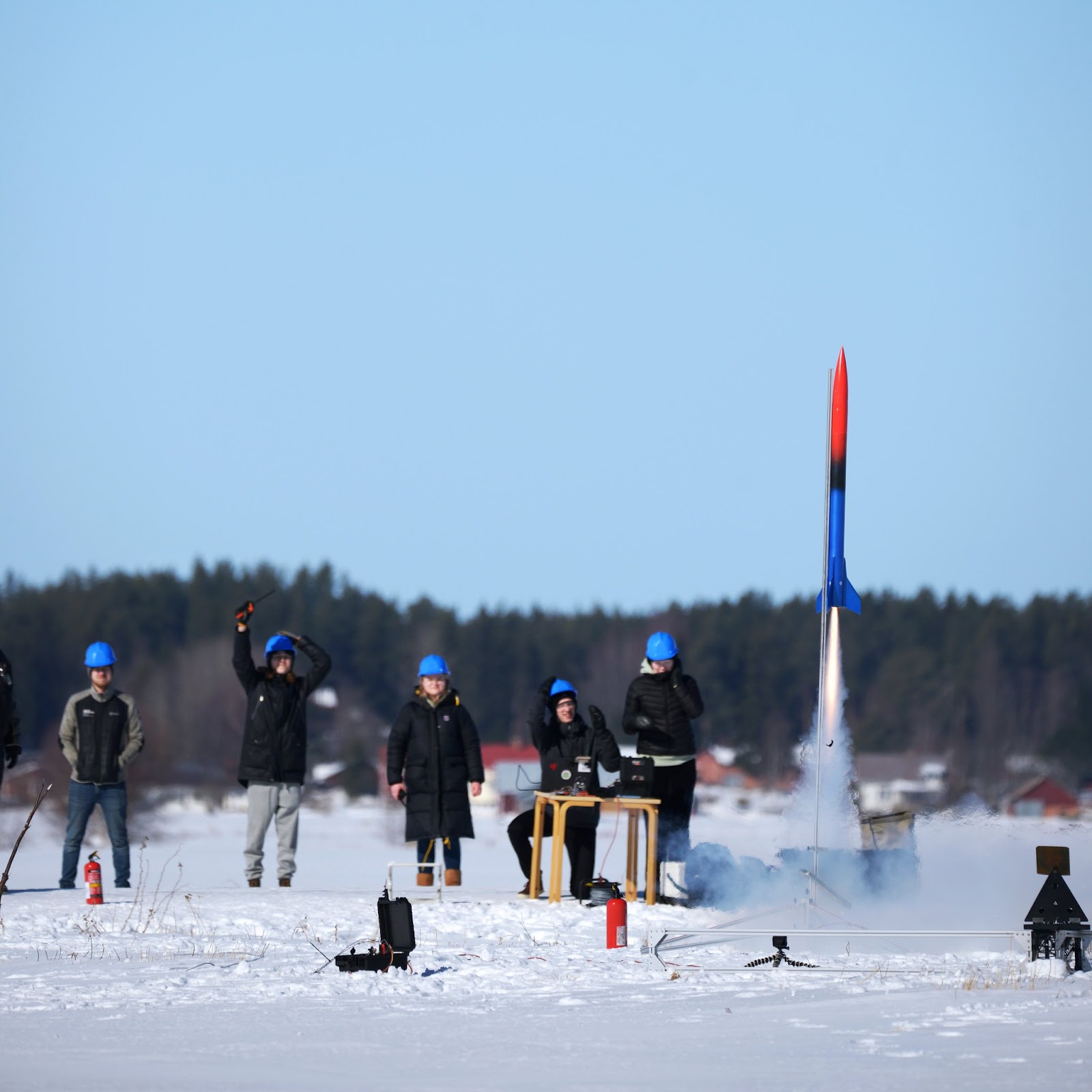
And what a Hacklab’ish competition it is! 4-5 person teams composed of pupils in middle school and secondary education (yläaste ja toisen asteen oppilaitokset) build cansats, soda can sized “satellites” with Arduino-based electronics that make simple environmental measurements. The mandatory measurements are air pressure and temperature, but all teams also choose their own extra task. There we saw sensors such as a muon detector, geiger counter as well as visible light and infrared cameras. Below, an example of the internals of a cansat by the team Kvanttikala, “Quantum Fish” from the Finnish Secondary High School in Estonia. Note the heavy duty internal structure protecting the electronics from the stresses of the flight and landing!
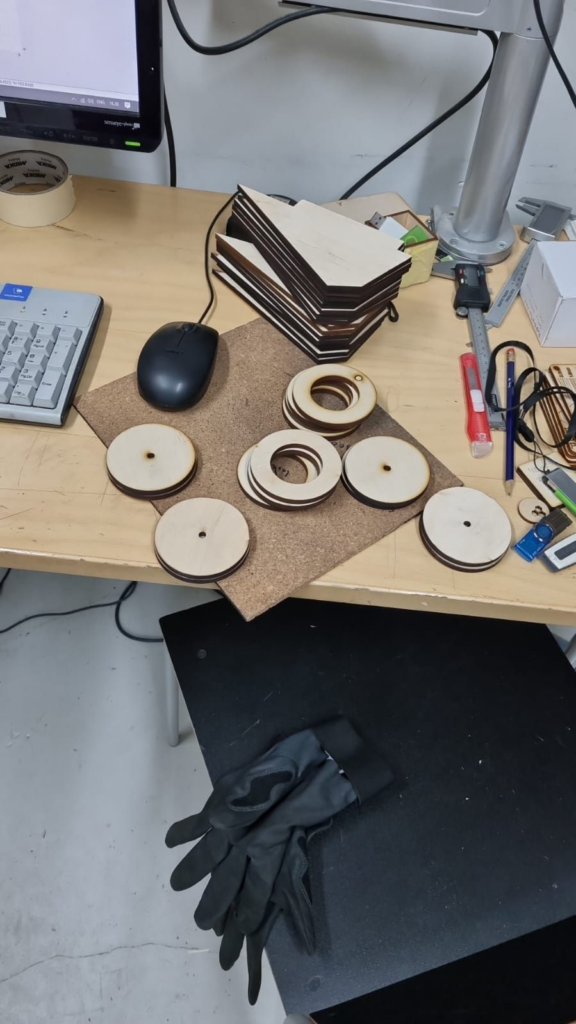
The cansats are flown hundreds of metres in the air using various methods. Quite obviously, we think the only correct way to fly satellites is using ROCKETS!
The Hacklab members have probably seen quite a lot of rocket building activity during the winter. Many of those rockets were for this event. Fins and bulkheads were cut with the laser cutter, the airfoils formed with belt sanders, motor holders machined with Lotta. One day we may also see better paint jobs, when the painting room gets finalised. Hacklab is the perfect place for this kind of craft, too!
And of course, everyone wants to see a rocket launch. The one below is team TAIGASAT’s extra flight with a bit bigger than standard motor, H225-WT, shoved into the back end of Timo’s rocket “Kuituhirviö”. Flames, hot exhaust plume and happy faces at the beginning of a fully successful launch!
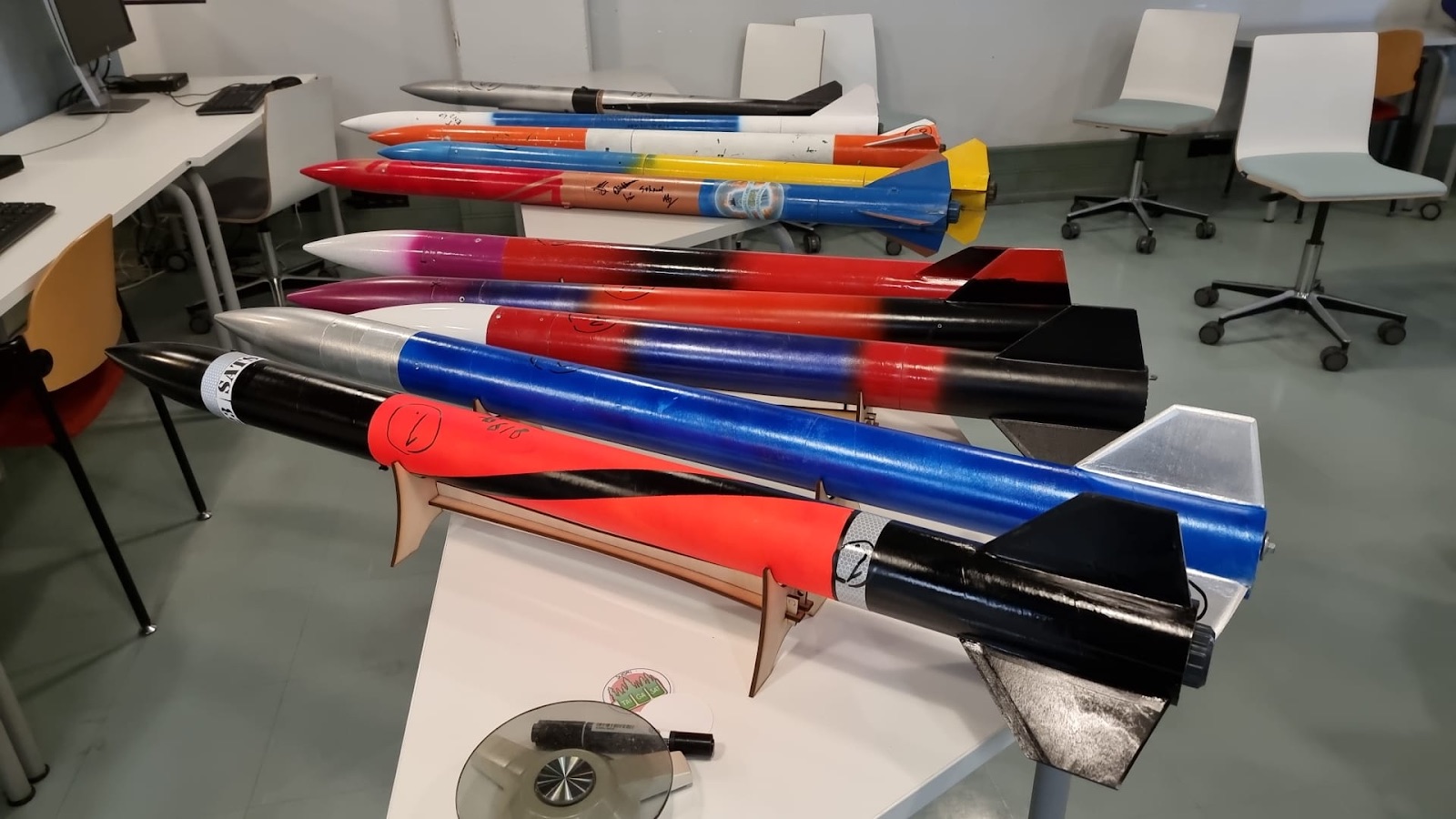
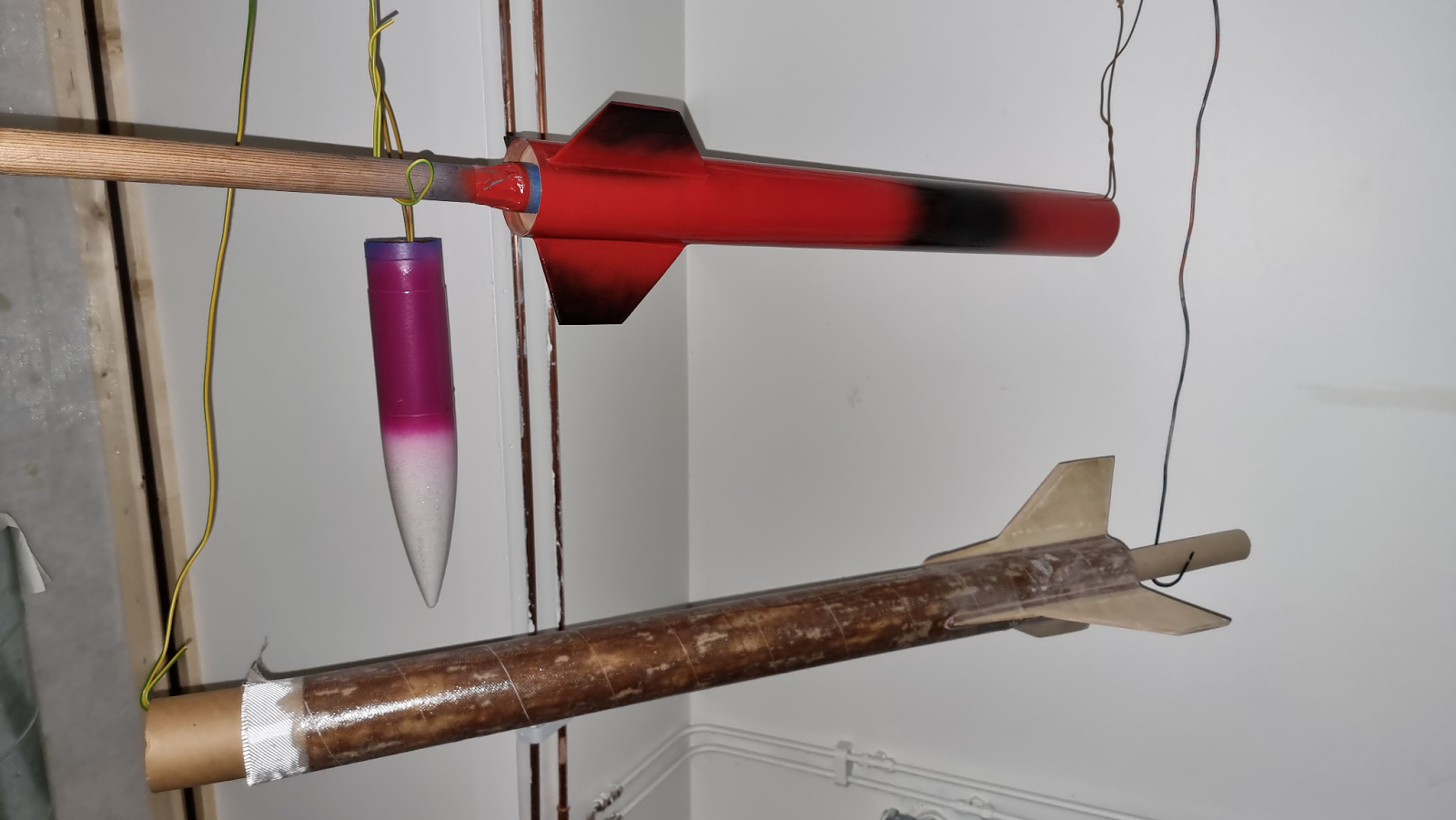
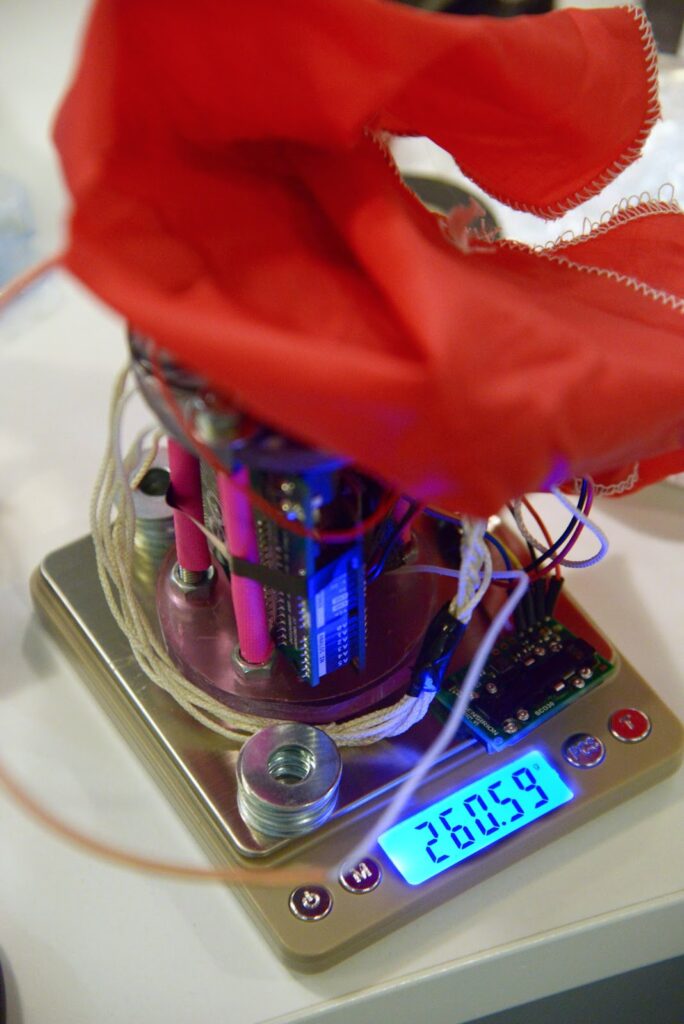
All photos Ⓒ Jan Holmgård
The competition was again a great experience. More wonderful photography by Jan Holmgård here and videos compiled by Matti Lepomäki:
